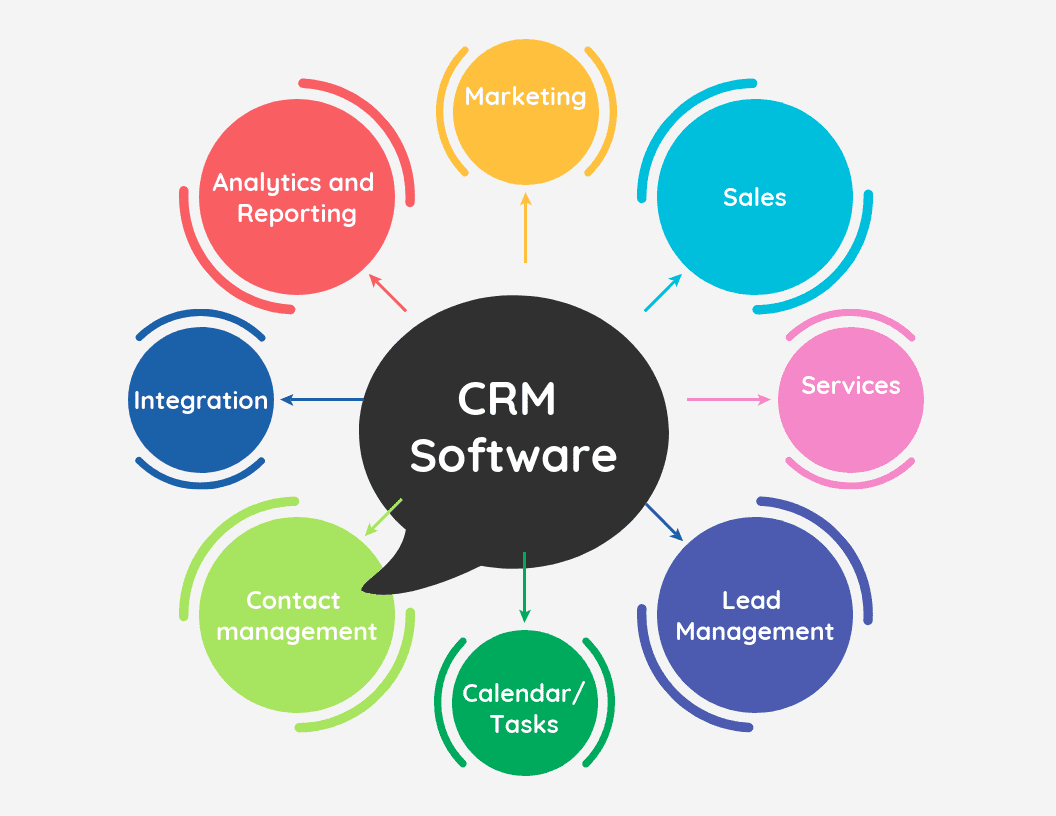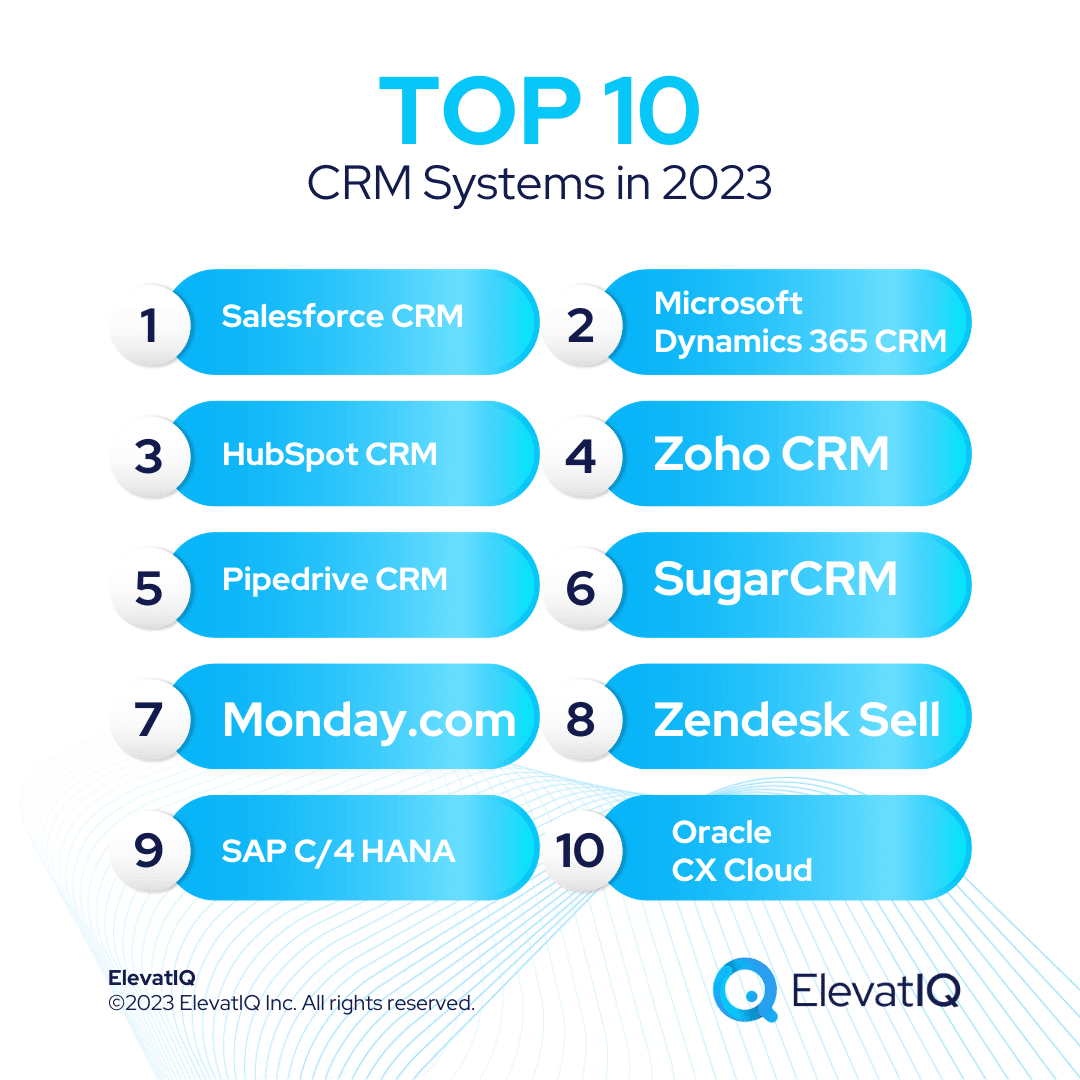Top CRM: A Comprehensive Guide to Customer Relationship Management
In today’s competitive business landscape, customer relationship management (CRM) has emerged as a critical tool for organizations seeking to enhance customer engagement, optimize sales processes, and drive business growth. This guide delves into the multifaceted world of CRM, providing insights into market trends, vendor offerings, essential features, selection criteria, implementation best practices, integration strategies, and emerging innovations shaping the future of CRM.
CRM Market Overview: Top Crm
The Customer Relationship Management (CRM) market is experiencing rapid growth, driven by the increasing adoption of cloud-based CRM solutions and the growing need for businesses to improve customer engagement and retention.
According to a report by Gartner, the global CRM market size is projected to reach $69.5 billion by 2028, growing at a compound annual growth rate (CAGR) of 10.5% from 2023 to 2028.
Key Trends in the CRM Market
Some of the key trends shaping the CRM market include:
- Cloud-based CRM solutions:Cloud-based CRM solutions are becoming increasingly popular as they offer greater flexibility, scalability, and cost-effectiveness compared to on-premise solutions.
- Artificial intelligence (AI):AI is being used to enhance CRM capabilities, such as customer segmentation, lead scoring, and predictive analytics.
- Integration with other business systems:CRM systems are being integrated with other business systems, such as ERP and marketing automation systems, to provide a more comprehensive view of the customer.
- Focus on customer experience:Businesses are increasingly focusing on improving the customer experience, and CRM systems are playing a key role in this effort.
Top CRM Vendors
In the competitive landscape of customer relationship management (CRM) software, a select group of vendors has emerged as leaders, commanding significant market share and offering comprehensive solutions. These top CRM vendors have established themselves through their robust feature sets, innovative capabilities, and proven track records of customer success.
The market share of the leading CRM vendors varies depending on the specific industry and region, but some of the most prominent players include Salesforce, Microsoft Dynamics 365, SAP, Oracle, and HubSpot. These vendors offer a range of CRM solutions tailored to different business sizes and industries, catering to the diverse needs of organizations across the globe.
Market Share and Strengths, Top crm
- Salesforce:Dominating the CRM market with a significant market share, Salesforce is renowned for its cloud-based platform, robust functionality, and extensive ecosystem of third-party integrations. Its strengths lie in sales automation, customer service, and marketing automation.
- Microsoft Dynamics 365:Closely following Salesforce, Microsoft Dynamics 365 offers a comprehensive suite of CRM capabilities integrated with the broader Microsoft ecosystem. Its strengths include seamless integration with other Microsoft products, robust business intelligence capabilities, and industry-specific solutions.
- SAP:SAP’s CRM solutions are designed for large enterprises, providing a comprehensive platform for managing customer interactions across various channels. Its strengths include deep industry expertise, support for complex business processes, and a strong focus on data security.
- Oracle:Oracle’s CRM solutions offer a robust set of features tailored to specific industries, including healthcare, financial services, and manufacturing. Its strengths include scalability, customization options, and a focus on data management.
- HubSpot:HubSpot’s CRM platform is designed for small and medium-sized businesses, providing an all-in-one solution for marketing, sales, and customer service. Its strengths include ease of use, affordability, and a focus on inbound marketing.
Weaknesses
- Salesforce:Salesforce’s pricing can be expensive for small businesses, and its platform can be complex to implement and customize.
- Microsoft Dynamics 365:Microsoft Dynamics 365 requires significant investment in implementation and customization, and its licensing model can be complex.
- SAP:SAP’s CRM solutions are primarily designed for large enterprises and may not be suitable for small businesses or organizations with limited budgets.
- Oracle:Oracle’s CRM solutions can be complex to implement and require specialized expertise, making them less accessible for small businesses.
- HubSpot:HubSpot’s CRM platform may lack some advanced features and customization options required by larger organizations.
Pricing Comparison
| Vendor | Pricing Model | Pricing Range |
|---|---|---|
| Salesforce | Subscription-based | $25-$300 per user per month |
| Microsoft Dynamics 365 | Subscription-based | $65-$200 per user per month |
| SAP | Subscription-based | $150-$500 per user per month |
| Oracle | Subscription-based | $100-$400 per user per month |
| HubSpot | Freemium and subscription-based | Free-$1,200 per month |
CRM Features and Capabilities
Customer Relationship Management (CRM) systems are feature-rich software platforms that offer a comprehensive range of functionalities to manage and enhance customer interactions and relationships.
Beyond core CRM features, advanced capabilities such as automation, analytics, and mobile functionality extend the power of these systems, enabling businesses to streamline processes, gain actionable insights, and deliver exceptional customer experiences.
Core CRM Features
- Contact Management:Store and manage customer contact information, including names, addresses, phone numbers, and email addresses.
- Lead Management:Track and nurture potential customers through the sales pipeline, managing lead generation, qualification, and conversion.
- Opportunity Management:Manage sales opportunities, track progress, and forecast revenue, providing insights into the sales pipeline.
- Case Management:Manage customer support cases, track interactions, and resolve issues efficiently.
- Activity Management:Track and manage customer interactions, including phone calls, emails, meetings, and tasks.
Advanced CRM Capabilities
- Automation:Automate repetitive tasks, such as lead assignment, email follow-ups, and case escalation, improving efficiency and reducing manual effort.
- Analytics:Provide valuable insights into customer behavior, sales performance, and marketing campaigns, enabling data-driven decision-making.
- Mobile Functionality:Allow access to CRM data and functionality from mobile devices, empowering teams to stay connected and productive on the go.
Benefits of CRM Features and Capabilities
CRM systems provide numerous benefits to businesses, including:
- Improved customer satisfaction and loyalty through personalized interactions.
- Increased sales efficiency and productivity by streamlining processes and automating tasks.
- Enhanced data analysis and insights for better decision-making and forecasting.
- Improved collaboration and communication among sales, marketing, and customer support teams.
CRM Selection Criteria
Selecting the right CRM system is crucial for businesses. Considerations include business size, industry, and specific requirements. A well-chosen CRM can streamline operations, improve customer satisfaction, and drive growth.
CRM Deployment Options
CRM deployment options include cloud-based, on-premise, and hybrid. Each option has its advantages and disadvantages:
| Deployment Option | Pros | Cons |
|---|---|---|
| Cloud-based | – Scalability and flexibility
|
– Security concerns
|
| On-premise | – Greater control and security
|
– High upfront costs
|
| Hybrid | – Combines benefits of cloud and on-premise
|
– More complex to manage
|
CRM Implementation and Best Practices

Implementing a CRM system involves careful planning and execution. Here are the key steps:
1. Project Planning and Scoping
- Define the project goals and objectives.
- Determine the scope of the CRM implementation.
- Identify the key stakeholders and their roles.
2. Data Migration
- Gather and prepare data from existing systems.
- Determine the data mapping and conversion requirements.
- Ensure data integrity and accuracy.
3. User Training and Adoption
- Develop a comprehensive training plan.
- Train users on the CRM’s features and functionality.
- Provide ongoing support and resources to ensure user adoption.
4. Change Management
- Communicate the benefits and impact of the CRM system.
- Manage expectations and address resistance to change.
- Monitor usage and make adjustments as needed.
5. Best Practices for Optimizing CRM Usage
- Regularly review and update the CRM system.
- Encourage user feedback and suggestions.
- Integrate CRM with other business systems.
- Track and measure CRM performance.
CRM Integration

Integrating CRM with other business systems is crucial for streamlining operations and maximizing efficiency. By connecting CRM with other applications, businesses can gain a comprehensive view of their customers and improve communication and collaboration across departments.
Integrating CRM with marketing automation enables seamless lead generation and nurturing. Automated marketing campaigns can be triggered based on customer behavior, leading to personalized and targeted marketing efforts. Additionally, CRM integration with ERP systems allows for real-time data exchange, ensuring accurate order processing, inventory management, and financial reporting.
Benefits of CRM Integration
- Improved customer service: Integrated CRM provides a 360-degree view of customer interactions, enabling support teams to quickly access customer history and resolve issues efficiently.
- Enhanced sales productivity: Integration with marketing automation automates lead generation and qualification, allowing sales teams to focus on high-potential prospects.
- Increased operational efficiency: By integrating with ERP systems, CRM eliminates manual data entry and ensures data consistency, streamlining business processes.
- Improved decision-making: Integrated CRM provides real-time data and analytics, empowering businesses to make informed decisions based on customer insights.
Examples of Successful CRM Integrations
- Salesforce and HubSpot:This integration combines the powerful CRM capabilities of Salesforce with the marketing automation features of HubSpot, providing a comprehensive solution for businesses.
- Microsoft Dynamics 365 and SAP Business One:This integration connects Microsoft’s CRM platform with SAP’s ERP system, enabling seamless data exchange and end-to-end business management.
- Oracle Siebel CRM and Oracle E-Business Suite:This integration provides a fully integrated CRM and ERP solution, offering a comprehensive view of customer relationships and business operations.
CRM Trends and Innovations
The CRM market is constantly evolving, with new trends and innovations emerging all the time. These trends are being driven by the increasing adoption of AI, cloud computing, and social media.
AI is being used to automate tasks, improve customer segmentation, and provide personalized recommendations. Cloud computing is making it easier for businesses to access and manage their CRM data. Social media is providing businesses with new ways to connect with customers and build relationships.
Impact of AI on CRM
AI is having a major impact on CRM. AI-powered CRM systems can automate tasks such as data entry, lead scoring, and customer segmentation. This can free up sales reps to focus on more strategic tasks, such as building relationships with customers and closing deals.AI can also be used to improve customer segmentation.
By analyzing customer data, AI can identify different customer segments and target them with personalized marketing campaigns. This can help businesses increase their conversion rates and improve their customer satisfaction.
Impact of Cloud Computing on CRM
Cloud computing is making it easier for businesses to access and manage their CRM data. Cloud-based CRM systems are hosted by a third-party provider, so businesses do not have to worry about maintaining their own hardware and software. This can save businesses time and money.Cloud-based CRM systems are also more scalable than on-premises CRM systems.
This means that businesses can easily add or remove users as needed. Cloud-based CRM systems are also more accessible than on-premises CRM systems. Sales reps can access their CRM data from anywhere with an internet connection.
Impact of Social Media on CRM
Social media is providing businesses with new ways to connect with customers and build relationships. Businesses can use social media to share content, answer questions, and provide customer support. Social media can also be used to track customer sentiment and identify potential leads.Businesses that use social media effectively can improve their customer service, increase their sales, and build stronger relationships with their customers.
Summary

By embracing the transformative power of top CRM solutions, businesses can unlock a wealth of benefits, including improved customer satisfaction, increased sales conversion rates, enhanced operational efficiency, and a competitive edge in the marketplace. As the CRM landscape continues to evolve, organizations must stay abreast of the latest trends and innovations to harness the full potential of this powerful technology.